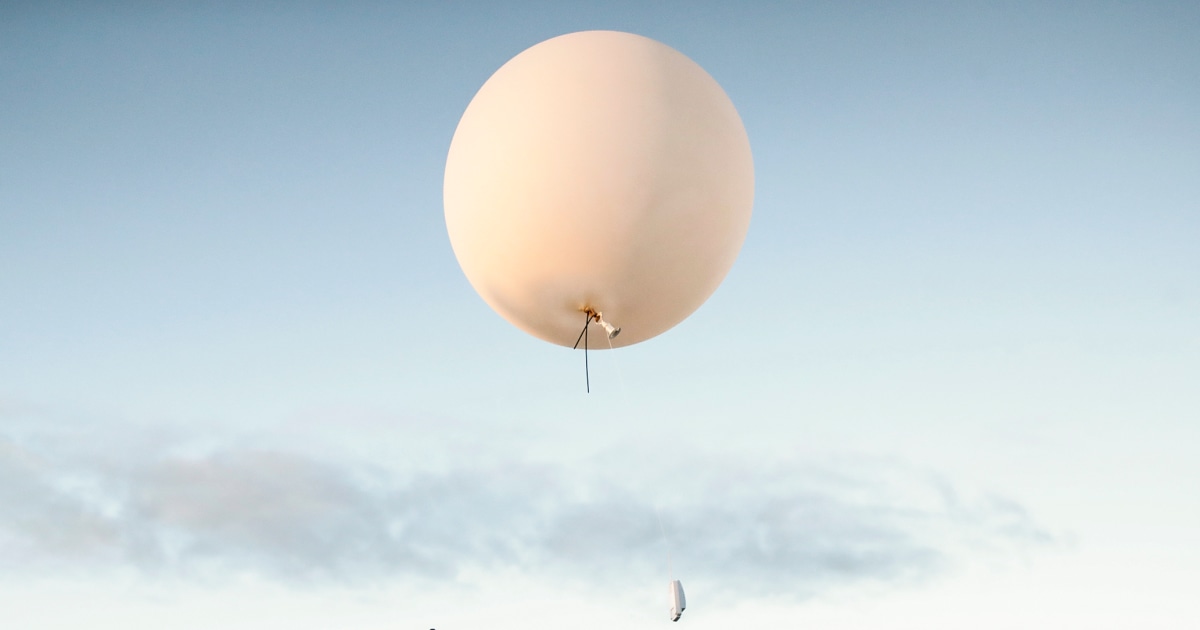
Radar systems for weather have become so advanced that they can determine the shape of a 6-millimeter raindrop from more than 8 miles away.
How, then, did multiple objects recently shot down by fighter jets seemingly escape public notice until the U.S. military dispatched these objects with missiles?
It’s as simple as not finding what you’re not looking for. Weather scientists, government agencies and the military all have powerful radar systems to detect objects at a very granular level. But faced with an airspace filled with numerous objects and passing clutter, each radar operator — driven by their particular interests and mission — filters their view to a more limited scope.
“What we look for with a weather radar is weather. We don’t care if there’s a balloon up there or a plane flying through your screen,” John Hubbert, a project scientist at the National Center for Atmospheric Research, said in an interview. “Unless you’re really looking at that, you’d just skip over it.”
After the suspected Chinese spy balloon was spotted flying high over the northern U.S. earlier this month, the North American Aerospace Defense Command, or NORAD, says it has adjusted how it filters radar data to better find small objects at low speed and high altitudes — leading the government to find the unidentified objects President Joe Biden ordered brought down over the weekend.
U.S. officials have said those objects, which are still unknown in origin, were floating at civilian aircraft altitude — much lower than the suspected spy balloon — which drove the decision to bring them down. The three objects were also smaller than the suspected surveillance balloon. They were described by U.S. and Canadian officials as all about the size of a small car.
“One of the reasons that we think we’re seeing more is because we’re looking for more,” National Security Council spokesman John Kirby said at a recent White House briefing.
Across industry and government, radar analysis is a process filled with unwanted echoes or signals, which are typically harmless. Recent events, however, have raised questions over how effectively the military is able to process airspace clutter, if the technology needs modernization and what other gaps exist in a system built for the country’s defense.
Kenneth Rapuano, former assistant secretary of defense for homeland defense and global security at the Pentagon, said the recent shoot-downs highlighted two issues: the need to modernize NORAD’s radar and early warning systems and “the challenge of filtering nuisance or unwanted targets from radar, particularly as threats present smaller radar signatures.”
“You’re not looking to detect everything detectable,” he said in an interview. “You’re looking to detect those targets of greatest priority and concern.”
Things like birds, insects or even drones can scatter radio waves and obstruct the intended view. Some weather radar systems would scrub a floating vessel, like a balloon, from its view through a filter or algorithm. But while clutter is a complication, the major challenge is that there’s no one entity in charge of scanning the skies for the type of objects now in question.
The U.S. has broad radar coverage across the country for military, weather and civilian aviation. The National Weather Service, the Federal Aviation Administration and the U.S. Air Force operate the Next Generation Weather Radar, or NEXRAD, system of 160 high-resolution weather radars that stretch across the U.S. Still, that system has coverage gaps, particularly in Alaska and mountainous areas in the western U.S.
Scientific institutions separately operate powerful research radar systems.
At air traffic control sites, the FAA operates airport surveillance radar systems, using both primary radar, which offers a broad view of the surroundings, and secondary radar, which tracks aircraft through onboard transponders. Past FAA leaders said the agency does not scan the skies for extraneous objects at high altitude, such as the suspected spy balloon.
“The only way you would have seen that balloon was on primary radar and nobody was looking at it at 60,000 feet,” said Randy Babbitt, a former FAA administrator, of the Chinese balloon downed off the South Carolina coast. “An approach controller at Kennedy Airport — all he cares about is the 15 miles around Kennedy Airport and anyone coming in or leaving from Kennedy Airport.”
National security agencies have direct access to the FAA’s radar data and surveillance systems, said Michael Huerta, another former FAA administrator.
“Civilian surveillance systems are there for a different reason. They’re there to ensure the safety of the aircraft and keep them separated from each other,” Huerta said. “That information is made available to national security types who look for hostile actors.”
Gen. Glen VanHerck, who leads NORAD, said Sunday that the military’s system had originally filtered out small objects and “low-speed clutter” to keep an eye out for more direct threats such as missiles and planes. But, he said, “with some adjustments, we’ve been able to get a better categorization of radar tracks now.”
Asked by NBC News on Wednesday about the downed objects and whether there’s been a potential threat to U.S. air traffic for years that slipped through the cracks, Defense Secretary Lloyd Austin deferred to the FAA.
“Well, you know, I’ll defer to the FAA to talk about what they’ve seen in the airspace. Again, as we saw these things operating in that space, we took prudent action,” Austin said in an interview.

Acting FAA Administrator Billy Nolen told NBC News in a Wednesday interview that he felt strongly that “our nation’s airspace is safe, and it’s secure.” The agency does not track every balloon in U.S. airspace, he said.
Since 9/11, the FAA and NORAD have shared radar data and members of both organizations regularly embed with each other, according to retired Maj. Gen. Scott Clancy, a Canadian who served as NORAD director of operations and former deputy commander of the Alaskan NORAD region. This began to change the air picture for the U.S. and Canada because, prior to 9/11, NORAD focused on external-facing radar and had a more limited ability to track objects across the two nations’ interiors.
The Biden administration on Monday announced the formation of an interagency team to assess U.S. policy on “detection, analysis and disposition” of unidentified objects deemed to be a hazard, according to Kirby.
While White House and military officials have emphasized that their tweak in radar sensitivity has led them to pick up more objects, they admitted they don’t always know what exactly they’re looking at.
Clancy said the amount of radar clutter they’re now seeing means they’re likely having to launch more military aircraft to confirm the identity of objects and what threats they could pose.
“It can be overwhelming to try to gather, out of all of the radar clutter, the things that are operating at extremely low speed,” he said. “They’re detecting more. Because they’re detecting more, they’re launching more. Because they’re launching more, they’re finding things that don’t make sense more. And then they’re taking action, especially when it poses a threat to civil aviation.”
One reason the skies are so busy: There’s a relatively low barrier to launch unmanned balloons.
Federal regulations allow hobbyists and scientists to launch small balloons without notice to the agency if they’re only a few pounds and won’t create a hazard for others. Launches cannot take place within restricted areas.
Educational organizations that promote these flights often still suggest filing NOTAMs — or notice to air missions — and informing the FAA of the plans. Larger balloons are regulated more strictly.
From 2012-2016, an estimated 376,500 unmanned free balloons of all sizes were launched by government, industry and educational programs in the U.S., according to estimates from a December 2017 report for an FAA Aviation Rulemaking Committee. During that time period, 17 collisions between balloons and manned aircraft were reported, according to the report.
None resulted in damage.
But as technology evolves and creates new weapon and surveillance systems that can range in size and speed, Rapuano said, the U.S. needs to remain on guard at all levels — including in its observance of radar clutter.
“Hopefully we’re able to match the pace of evolving aerospace threats with continued improvements of our surveillance capabilities,” he said. “That way we can discriminate amongst this increasing range and number of targets of interest that we’re going to be picking up, and discern feast from fowl and threats from nuisances.”

0 Comments :
Post a Comment